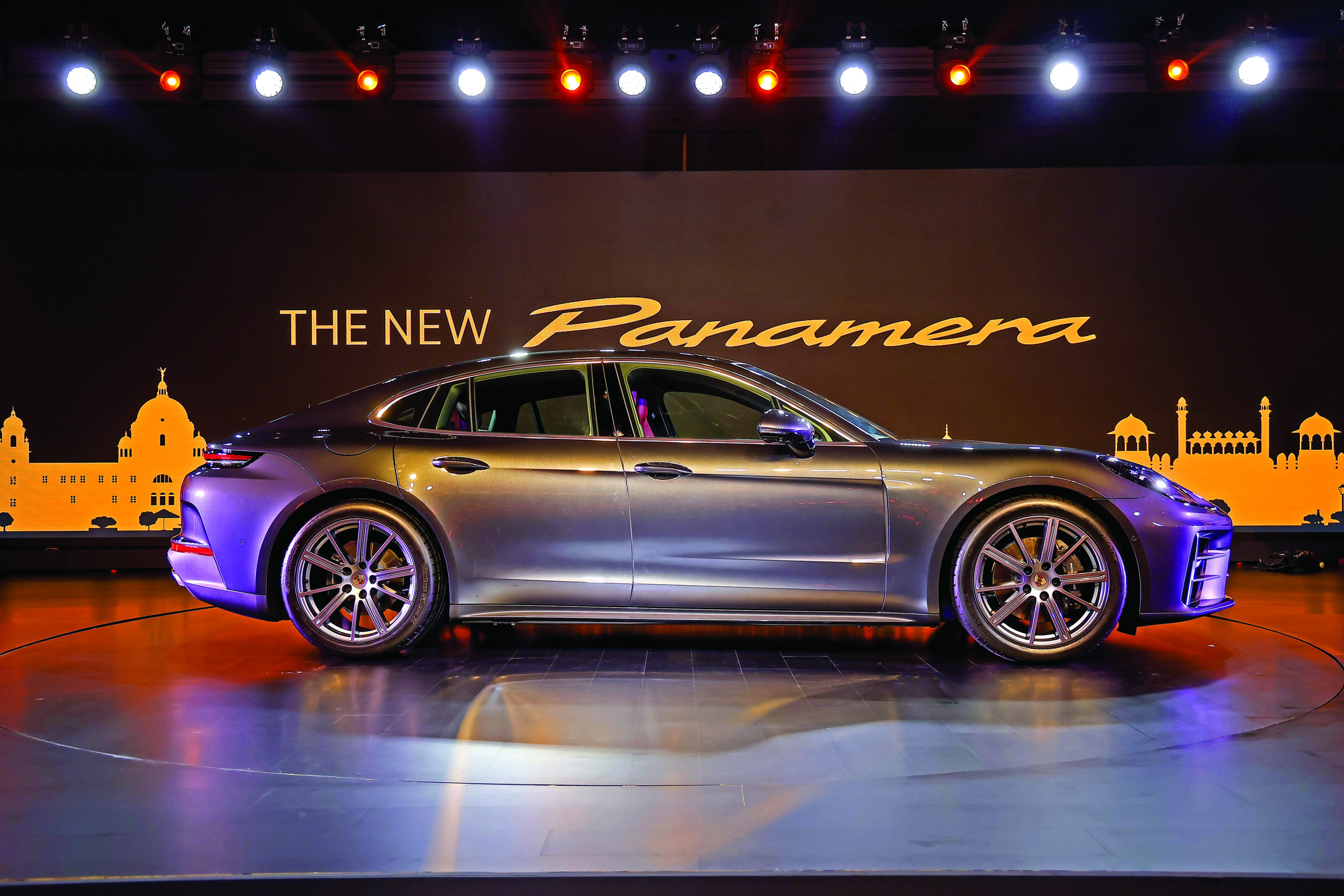Porsche has launched the new Panamera in India at a starting price of INR 1,69,62,000, ex-showroom. This is the latest, third generation, model of the car that debuted in 2009. The second generation came in 2016, whereas this model was introduced globally last year in November. Though the platform and overall dimensions haven’t changed, it can still be called an all-new car, thanks to the comprehensive changes it has received. Let’s take a look at some of them.
Design & Interiors
The new Panamera still unmistakably looks like a Porsche despite almost all the panels being new. The best part is that, in true Porsche ethos, the form still follows function here. Therefore, there’s now an additional air intake above the number plate for the increased air requirement of the drive systems. The
window line in profile has also been redesigned, and the outer edges of the rear window are flush with the contour of the body. The headlight housing is new (and the lights inside them too, which I’ll get to in a minute), the bumper, fenders, bonnet—everything is new.
The new Panamera comes with standard Matrix LED headlights, but if you want the ultimate setup with more features, such as dedicated lane brightening, you can opt for the high-resolution HD Matrix LED lighting system, which has more than 32,000 pixels per
headlight. Porsche says that the illumination range is up to 600 metres.
Inside the cabin, Porsche is claiming that the Panamera’s cockpit strikes the ideal balance between digital and analogue controls, and that the major elements are positioned along the driver’s axis to provide an unmatched driving experience. At this point, you’d normally hear me say that I’ll verify that as and when I get to test it; however, since this is a company that also makes the 911 GT3 RS, I, or anyone else on this planet, wouldn’t even dare to have any doubts here.
The gear selector lever has now been placed directly to the right of the steering wheel. The drive mode switch is on the steering wheel itself, and the assistance control stalks are also ergonomically placed, thereby ensuring that the driver won’t need to take his eyes off the road to adjust the drive modes and assistance systems.
There’s an optional 10.9-inch screen for the passenger as well, which, in addition to the usual infotainment, can also be used by the passenger to view the car’s vehicle performance data. Don’t worry, the driver won’t be distracted as this screen’s display cannot be seen from the driver’s seat.
The Park Assist feature is standard now, and so is the cooled smartphone compartment with inductive charging function. The Panamera also gets an improved fine dust filter with GPS-supported, automatic air-recirculation function.
Engine
If you noticed in the headline itself, there are no suffixes in the car’s nomenclature. It just says, Porsche Panamera and not Porsche Panamera 4, 4 E-Hybrid, 4S E-Hybrid, or Turbo E-Hybrid. That essentially means we get only the rear-wheel-drive, 2.9-litre V6 turbo-petrol Panamera, and not the all-wheel-drive, or the all-wheel-drive hybrid combos, or the top-end V8 turbo-petrol hybrid. If you ask me, in India, I’ll choose the real-wheel-drive Panamera anyday. Why? Well, other than the fact that it has the most fun drivetrain format, the power and torque figures have increased too. The engine now produces 260 kW (353 PS) of peak power and 500 Nm of torque—that’s 17 kW (23 PS) and 50 Nm more than earlier. Modifications to boost pressure, fuel-injection flow rate, and ignition timing have helped it achieve those numbers. Porsche is claiming that this Panamera will go from 0–100 km/h in 5.1 seconds before hitting a top speed of 272 km/h. That’s fast enough for a four-door sports sedan in India. If you live in Germany though, see if you can get that V8…
Suspension
The most important change in the new Panamera has to be the revised suspension. So much so that I felt compelled to directly ask Porsche about it and not rely just on the information provided in the offical press release.
I was a bit intrigued because while the previous car’s air suspension had three chambers (per air-strut), the new one has two. Porsche promptly clarified that the new arrangement is quicker and more precise. Plus, the hydraulic damper now has two valves separating the rebound and compression stages, thereby offering an even wider range of comfort and sportiness. Porsche claims that the new system has better damping on bad roads, while still ensuring more stability in dynamic driving situations.
Production & Delivery
Porsche produces the new Panamera at its Leipzig factory, and deliveries
will start now. Yes, you may want to call your chartered accountant right away if you’re contemplating a buy in this segment, and find the S-Class and 7 Series too commonplace.







